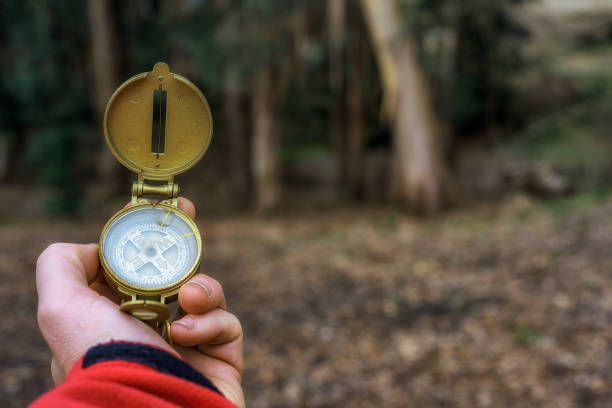The word “brujula” describes a compass, which has been a crucial navigational aid for generations. which gets its name from the Spanish word for compass, is a very useful tool for assisting people in determining their direction and navigating through a variety of surroundings. This article examines the types, components, historical significance, and practical uses of the brujula in contemporary navigation.
Importance of the Brujula in History
The history of the brujula, or compass, is extensive and goes all the way back to antiquity. A revolutionary device that transformed navigation, the compass was first utilized by the Chinese during the Han Dynasty. The first compasses were formed of lodestone, a magnetic material that is found naturally. These devices gave sailors a trustworthy way to tell which way to go. The brujula changed over time as a result of technological breakthroughs that produced more reliable and accurate compasses. Because it made it possible for people to navigate over great distances with greater accuracy.
Brujula Types and Components
Magnetic Compass: The most prevalent kind of brujula is the magnetic compass. It is made up of a magnetic needle pointing in the direction of magnetic north and aligned with the Earth’s magnetic field. A revolving bezel or dial on this kind of compass usually enables users to precisely fix bearings and read directions. When hiking, camping, and sailing, among other outdoor activities, magnetic compasses are a need.
Gyrocompass: Rather than utilizing magnetic north, a gyrocompass determines true north using gyroscopic principles. Because of its extreme accuracy and immunity to magnetic fields, this kind of brujula is perfect for use in aviation and maritime applications. Large ships and aircraft, where accurate navigation is essential, frequently have gyrocompasses.
Digital Compass: To detect direction, digital or electronic compasses make use of sensors and electronic circuits. They frequently interface with cell phones and GPS devices to give users access to other capabilities like maps and tracking in addition to real-time direction information. Because of their versatility and ease of use, digital compasses are widely used in outdoor activities and modern navigation.
The Brujula’s Operation
The magnetic field of Earth is the basis for the brujula’s operation. The compass’s magnetic needle points in the direction of the magnetic north pole when it lines up with the magnetic lines of force on Earth. Users can ascertain their orientation and set bearings by looking at the degrees and cardinal directions (North, South, East, and West) marked on the compass housing, or dial.
Use a brujula as directed by these instructions:
Hold the Compass Level: To enable the needle to swing freely and settle precisely, make sure the compass is held flat and level.
Permit the Needle to Settle: Prior to obtaining a reading, allow the magnetic needle to completely stop. This guarantees a precise course.
Go over the instructions:Orient the compass housing so that it points in the direction or bearing you want to go. Examine the degree or cardinal direction that the housing and needle represent.
Usages for the Brujula
Outdoor Activities: The brujula is a navigational aid that hikers, campers, and explorers will find invaluable. It assists users in locating themselves, creating routes, and preventing lostness in uncharted territory.
Maritime Navigation: The brujula is an essential tool for determining courses and preserving direction in maritime environments. Compasses are essential for safe navigation across waterways and oceans for boaters and sailors.
Aviation: Compasses are a crucial component of pilots’ navigation systems, helping them to maintain direction and assure precise flight trajectories.
Survival Situations: A brujula can save a person’s life in an emergency. In situations where conventional navigation systems might not be available, it helps people find their way to safety by helping them locate landmarks and directions.
Selecting the Proper Brujula
Examine Your Action: Pick made for the kind of activity you’re doing, like sailing, hiking, or flying. Make sure the compass is robust and appropriate for the circumstances you may face.
Examine Features: If necessary, keep an eye out for extra features like an integrated thermometer, an altimeter, or GPS integration. The compass’s usability and functionality may be improved by these features.
Evaluate Accuracy and Reliability: Examine reviews and manufacturer specifications to make sure the brujula is accurate and trustworthy. A reliable compass is necessary for safe navigation.
In conclusion, the Brujula can help you master navigation
The brujula, or compass, is still a crucial navigational aid that provides useful direction in a variety of situations. Users can recognize the importance of then both historical and contemporary navigation by being aware of its types, history, and functionality.




